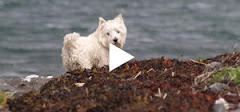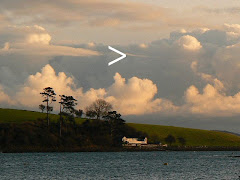Following on from yesterday's post, and given that it's a controversial area, I wanted to take a quick look at the arguments for and against reintroducing beavers to Scotland. I find it interesting anyway, and it may give some insight into the habits of these animals.
Objections to the program of staged releases are broadly as follows:-
1. Destruction of native broadleaved trees by feeding or damming. It's true that beavers, which are 100% herbivorous, prefer broadleaves to conifers, but the effect on tree populations is localised and, as a form of coppicing, can be seen as maintaining rather than destroying them. As to inundation caused by damming, riparian broadleaves like birch, willow and alder are tolerant of wet conditions even to the point of submersion. Aspen is a special case - scarcer and vulnerable - but those aspens which are close to beaver-suitable watercourses could be protected locally by sheathing or fencing.
2. Agricultural concerns. Beavers will feed on some crops and in areas where arable land is close to beaver habitats, damming can cause flooding. However, in Scotland, where there is an abundance of the beaver's preferred habitat of slow-moving rivers and lochs in timber-rich woodlands, this proximity is unlikely. The problem does not occur in either Norway or Sweden, for the same reason.
3. Fish stocks, in particular salmon, would suffer and spawning grounds would be silted up as a result of damming. Firstly, beavers don't eat fish. As to undesirable silting, beavers positively avoid the kind of fast-flowing upland rivers favoured by spawning salmon, so again it's unlikely to be a problem. In Norway, beaver and salmon populations have risen in tandem during the last 100 years, and no deleterious effects on fishing rivers have been recorded.
4. Damage to coniferous forests. Beavers have a strong preference for broadleaved trees, so damage by feeding and felling is not an issue. As to plantations, this would tend to be a problem only in large flat riparian conifer plantations; in Scotland the terrain mitigates against widespread flooding, and the majority of planting is in any case on steeper ground.
5. Dam issues. Where particular dams are thought to create a specific danger of damaging inundation, there are remedies available. 1.The dam can be destroyed (as long as this is done soon after construction, otherwise beaver will tend to rebuild on the basis, one assumes, that if it lasted that long it must be a pretty good dam). 2.The underside of the dam can be piped to allow a flow of water: this will regulate water levels or even equalise them, and beavers tend to build their dams from the top down, so will not attempt to plug the outlet below the surface.
6. Disease. All animals are capable of carrying disease, and beavers have not been shown to be more culpable than others.
7. Over-population. Beaver numbers can grow fast after they become established, but populations tend to be self-regulating inasmuch as unsuitable habitats result in reduced populations. If there is serious localised over-population, two options are moving and culling. Beavers are easily live-trapped even if you're not Davy Crockett, and can be moved to areas in need of new populations, or less populated areas. Culling, as with red deer, can result in a healthier, stronger population if properly managed: Norway and Sweden both have open or local seasons for licensed hunting. In addition, beaver meat is considered a delicacy in Scandinavia, and the fur goes for hats and other clothing.
So these are some of the issues. For me, the strongest argument against the reintroduction of beaver to Scotland is the risk of over-population, because I swapped my gun for a camera many years ago. On the other hand, it's not a noted problem elsewhere in Europe so there is no reason to suppose that Beavers: The Movie will ever be the new Birds. On balance, I reckon reintroduction is a good idea because:-
1. It will be good for tourism, on which Scotland heavily relies
2. Beavers are cute and
3. Fascinating. A few beaver facts: A pair can build a workable dam (basically to provide an area of stiller, deeper water conducive to shelter from predators) from sticks, stones, mud, leaves or even our human rubbish, in twenty-four hours. Given a little longer, they can complete an elaborate family lodge (a living area above ground but reachable via multiple underwater entrances) which will form one of many in a colony. They can fell a small tree in a few minutes. Beavers are non-aggressive herbivores, but when attacked will try to drag a predator underwater to drown it.
4. This is the big one for me: Beavers were here before us, and coexisted with other native species in Scotland for millions of years until we killed the last of them in the 1600s.















